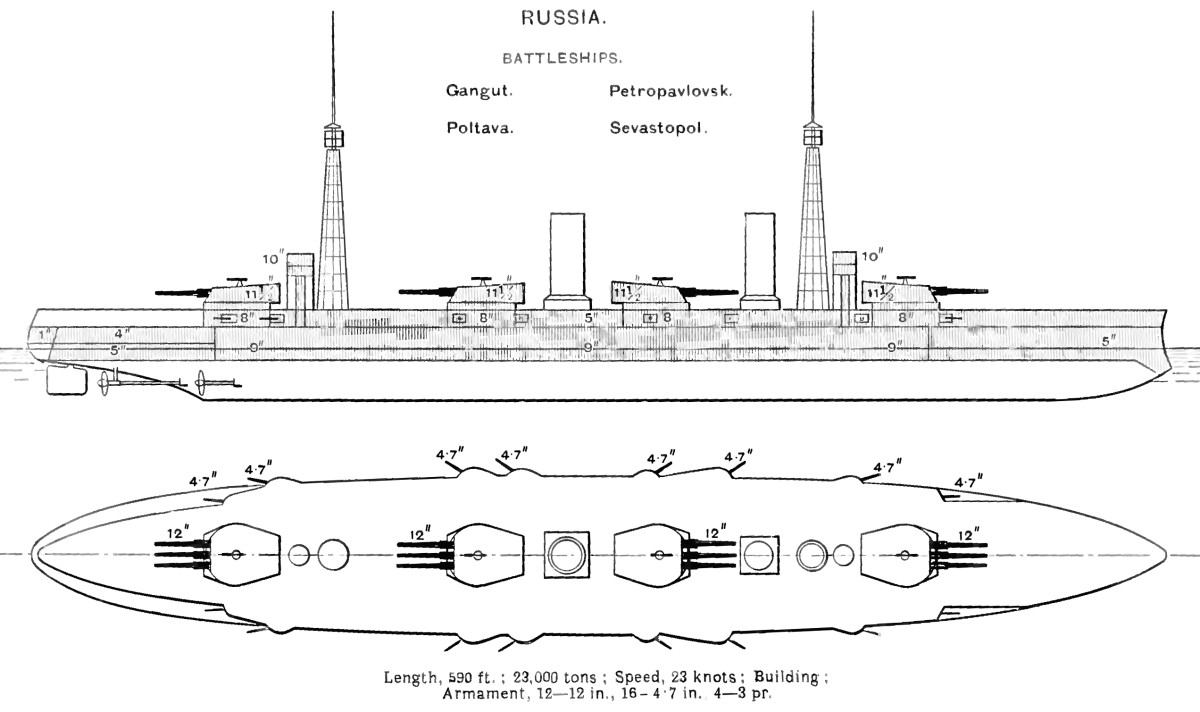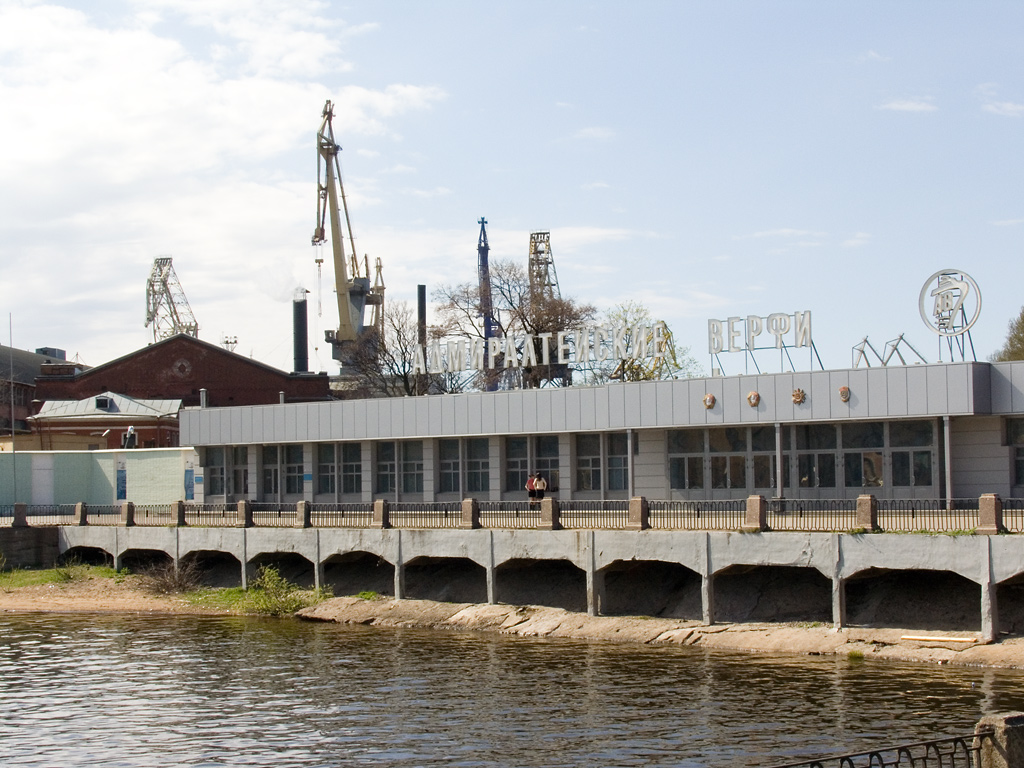|
Gangut-class Battleship
The ''Gangut''-class, also known as the ''Sevastopol''-class, were the first dreadnoughts built for the Imperial Russian Navy before World War I. They had a convoluted design history involving several British companies, evolving requirements, an international design competition, and foreign protests. Four ships were ordered in 1909, , , , and . Construction was delayed by financing problems until the Duma formally authorized the ships in 1911. They were delivered from December 1914 through January 1915, although they still needed work on the gun turrets and fire-control systems until mid-1915. Their role was to defend the mouth of the Gulf of Finland against the Germans, who never tried to enter, so the ships spent their time training and providing cover for minelaying operations. Their crews participated in the general mutiny of the Baltic Fleet after the February Revolution in 1917, and joined the Bolsheviks the following year. All of the dreadnoughts except for ''Petropavlovsk' ... [...More Info...] [...Related Items...] OR: [Wikipedia] [Google] [Baidu] |
Admiralty Shipyard
The JSC Admiralty Shipyards (russian: link=no, Адмиралтейские верфи) (''formerly Soviet Shipyard No. 194'') is one of the oldest and largest shipyards in Russia, located in Saint Petersburg. The shipyard's building ways can accommodate ships of up to , in length and in width. Military products include naval warships such as nuclear and diesel-powered submarines and large wikt:auxiliary#Noun, auxiliaries. History The shipyard was founded as the Galley Yard by Peter the Great during the Great Northern War on 5 November 1704 and located in the open ground along the Neva River behind the Admiralty building. The Admiralty Wharves official site (Russian) It was administered by the Russian Admiralty, hence its later name. In 1721 it was renamed ''Galley Wharf'' and in 1800 the ''New Admiralty Yard'', supplementing and in 1841 soon replacing the ''Galley Wharf''. In 1908, it was renamed the Admiralty Shipyard. In 1937 its two sections were known as ''Andre Marti'' ... [...More Info...] [...Related Items...] OR: [Wikipedia] [Google] [Baidu] |
Imperial Russian Navy
The Imperial Russian Navy () operated as the navy of the Russian Tsardom and later the Russian Empire from 1696 to 1917. Formally established in 1696, it lasted until dissolved in the wake of the February Revolution of 1917. It developed from a smaller force that had existed prior to Tsar Peter the Great's founding of the modern Russian navy during the Second Azov campaign in 1696. It expanded in the second half of the 18th century and reached its peak strength by the early part of the 19th century, behind only the British and French fleets in terms of size. The Imperial Navy drew its officers from the aristocracy of the Empire, who belonged to the state Russian Orthodox Church. Young aristocrats began to be trained for leadership at a national naval school. From 1818 on, only officers of the Imperial Russian Navy were appointed to the position of Chief Manager of the Russian-American Company, based in Russian America (present-day Alaska) for colonization and fur-trade developme ... [...More Info...] [...Related Items...] OR: [Wikipedia] [Google] [Baidu] |
Kronstadt
Kronstadt (russian: Кроншта́дт, Kronshtadt ), also spelled Kronshtadt, Cronstadt or Kronštádt (from german: link=no, Krone for "crown" and ''Stadt'' for "city") is a Russian port city in Kronshtadtsky District of the federal city of Saint Petersburg, located on Kotlin Island, west of Saint Petersburg, near the head of the Gulf of Finland. It is linked to the former Russian capital by a combination levee-causeway-seagate, the St Petersburg Dam, part of the city's flood defences, which also acts as road access to Kotlin island from the mainland. Founded in the early 18th century by Peter the Great, it became an important international centre of commerce whose trade role was later eclipsed by its strategic significance as the primary maritime defence outpost of the former Russian capital. Kaplan, 1995 The main base of the Russian Baltic Fleet was located in Kronstadt, guarding the approaches to Saint Petersburg. In March 1921, the island city was the site of the Krons ... [...More Info...] [...Related Items...] OR: [Wikipedia] [Google] [Baidu] |
Reserve Fleet
A reserve fleet is a collection of naval vessels of all types that are fully equipped for service but are not currently needed; they are partially or fully decommissioned. A reserve fleet is informally said to be "in mothballs" or "mothballed"; an equivalent expression in unofficial modern US naval usage is "ghost fleet". In earlier times, especially in British usage, the ships were said to be "laid up in ordinary". Overview Such ships are held in reserve against a time when it may be necessary to call them back into service. They are usually tied up in backwater areas near naval bases or shipyards in order to speed the reactivation process. They may be modified for storage during such a period, for instance by having rust-prone areas sealed off or wrapped in plastic or, in the case of sailing warships, the masts removed. While being held in the reserve fleet, ships typically have a minimal crew (known informally as a skeleton crew) to ensure that they stay in somewhat usable co ... [...More Info...] [...Related Items...] OR: [Wikipedia] [Google] [Baidu] |
Bolshevik
The Bolsheviks (russian: Большевики́, from большинство́ ''bol'shinstvó'', 'majority'),; derived from ''bol'shinstvó'' (большинство́), "majority", literally meaning "one of the majority". also known in English as the Bolshevists,. It signifies both Bolsheviks and adherents of Bolshevik policies. were a far-left, revolutionary Marxist faction founded by Vladimir Lenin that split with the Mensheviks from the Marxist Russian Social Democratic Labour Party (RSDLP), a revolutionary socialist political party formed in 1898, at its Second Party Congress in 1903. After forming their own party in 1912, the Bolsheviks took power during the October Revolution in the Russian Republic in November 1917, overthrowing the Provisional Government of Alexander Kerensky, and became the only ruling party in the subsequent Soviet Russia and later the Soviet Union. They considered themselves the leaders of the revolutionary proletariat of Russia. Their beliefs and ... [...More Info...] [...Related Items...] OR: [Wikipedia] [Google] [Baidu] |
February Revolution
The February Revolution ( rus, Февра́льская револю́ция, r=Fevral'skaya revolyutsiya, p=fʲɪvˈralʲskəjə rʲɪvɐˈlʲutsɨjə), known in Soviet historiography as the February Bourgeois Democratic Revolution and sometimes as the March Revolution, was the first of two revolutions which took place in Russia in 1917. The main events of the revolution took place in and near Petrograd (present-day Saint Petersburg), the then-capital of Russia, where long-standing discontent with the monarchy erupted into mass protests against food rationing on 23 February Old Style (8 March New Style). Revolutionary activity lasted about eight days, involving mass demonstrations and violent armed clashes with police and gendarmes, the last loyal forces of the Russian monarchy. On 27 February O.S. (12 March N.S.) the forces of the capital's garrison sided with the revolutionaries. Three days later Tsar Nicholas II abdicated, ending Romanov dynastic rule and the Russian Empi ... [...More Info...] [...Related Items...] OR: [Wikipedia] [Google] [Baidu] |



_underway_c1947.jpg)
